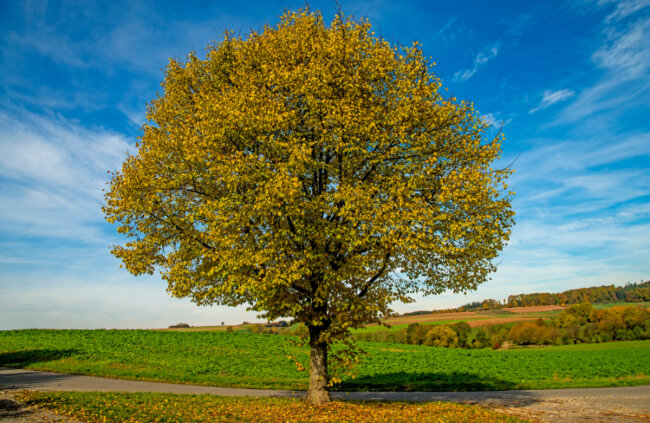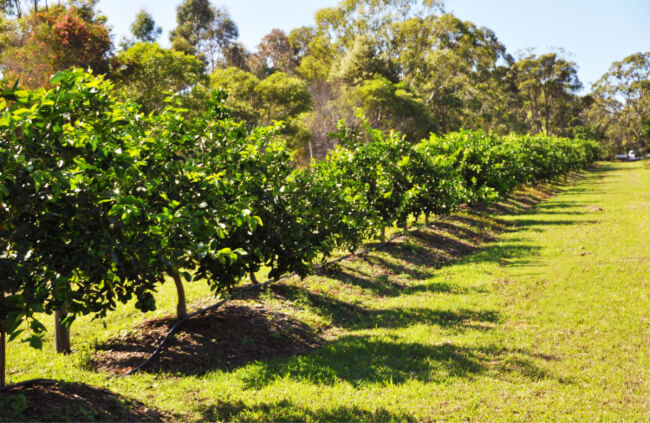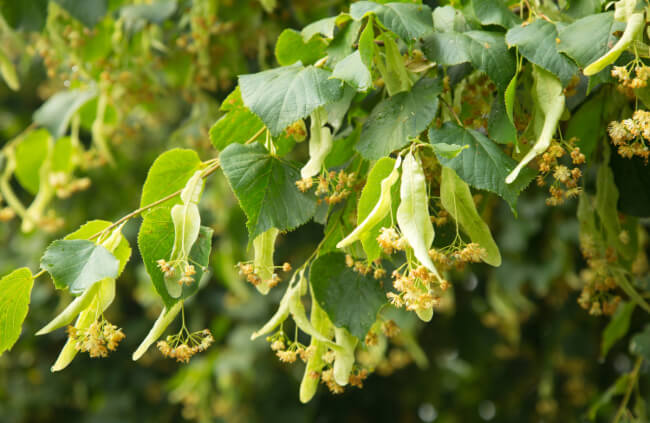The lime tree is a good looking evergreen tree that has green and glossy leaves, scented white flowers, and much prized lime fruit. In our guide, we’ll have a look at the varieties of lime and how they are different.
Learn how to propagate a lime tree using seed or the budding technique, and also how to care for this beauty once it’s growing.
More...

Family: | Rutaceae |
|---|---|
Genus: | Citrus |
Species: | Various |
Common Names: | Key lime, Mexican lime, West Indian lime, Tahitian or Persian lime |
Origin: | Asia |
Location: | Indoor or outdoor |
Type: | Small, evergreen tree |
Growth: | Up to 5 metres tall and 1.8 metres wide |
Sun requirements: | Full sun |
Foliage Colour: | Dark green |
Flower Colour: | White |
Flowering: | Spring and summer |
Fruit: | Round, green, small to medium size |
Maintenance level: | Average |
Poisonous for pets: | Yes |
Introducing Lime Trees
Lime as we know it is a few different species and types of trees and shrubs. They belong to the Citrus genus, growing usually in tropical and subtropical places although how they grow does depend on the species.
The one that is most common and readily available is the Persian lime, followed by the slightly smaller Key lime. The pulp of a lime fruit is soft and juicy, with a yellow to green colour and quite acidic. Limes usually contain more acid and sugar than lemons.
Lime fruit is used to make chutneys and the juice of the lime fruit is delicious in drinks, foods and sweet treats. The juice of lime fruit can be used as a concentrate, but is also frozen or dried. Lime oil is created from the fruit peel and citric acid created from lime fruit.

Lime tree leaves are usually quite thick and hard, with an oval shape and up to 8 cm in length. The leaves and fruit of a lime tree vary according to the species in terms of size.
When it comes to harvesting lime tree fruit, it needs to be ripe as the fruit won’t ripen once it’s been picked. This is true of all citrus fruits. The skin of the lime fruit is usually a light green colour but can also look more orange for certain species.
Lime trees produce delightful smelling flowers at the beginning of summer. The flowers are white but if they are directly in the sun, they take on a purple colour. Lime trees don’t usually grow higher than 5 metres. If you don’t prune the tree it will take on the shape of a shrub.
Types of Limes Trees
Tahitian or Persian lime (Citrus latifolia)
This lime has quite large leaves and the fruit it produces has little to no seeds. Tahitian lime trees have very little thorns, with fruit that is bigger than the West Indian variety. The Persian lime is quite hardy and will handle cooler temperatures well.
The botanical name latifolia means ‘broad leaves’ which is an apt description. In regions with warmer weather, it’s possible for the Tahitian lime to bear fruit throughout the year.
Key lime, Mexican lime or West Indian lime (Citrus x aurantiifolia)
The botanical name Citrus x aurantiifolia means golden leaf citrus in Latin. The leaves of Key lime look like orange trees and the branches are thorny. The fruit is on the smaller side, has plenty of seeds and is more acidic than Tahitian lime.
The Mexican or West Indian lime doesn’t like frost and prefers a warm and subtropical growing environment.
Rangpur lime (Citrus x limonia)
This type of lime tree is also called mandarin lime. It has a green outer skin but orange fruit. It makes a great marmalade and is believed to be a hybrid of a lemon and mandarin.
Kaffir lime or makrut lime (Citrus hystrix)
The leaves and fruit of this lime tree are popular for Southeast Asian cooking, specifically Thai food. It is also used to create perfumes. The fruit is green and bumpy, growing on a thorny tree that has various branches.


Get Your Free Guide:
Master Growing Australian Natives eBook
A Must Have Complete Guide for Every Australian Garden
Get Your Free Guide:
Master Growing Australian Natives eBook
A Must Have Complete Guide for Every Australian Garden
Check out our in-depth guide to growing kaffir lime for more info.
Pursha or Romana lime (Citrus limetta x Citrus sinensis)
This lime is also called sweet lemon and is less acidic than the other species of lime. It’s a popular lime tree grown in the Mediterranean. It produces small, sphere shaped fruit which are flat at the ends and look very similar to a lemon.
Caviar lime (Microcitrus australasica)
The Caviar lime is also called the Australian finger lime and is native to Australia. They are small and long and look more like a gherkin. They contain tiny little juice filled sacks that look similar to caviar, hence the name Caviar lime.
How to Grow Lime Trees in Australia

Propagating Lime Trees
Lime Tree Budding/Grafting
The best time to do lime tree grafting is at the start of spring. The tree bark needs to be fairly loose so that you can separate the bud from the main plant. You’ll need rootstock for budding the lime tree and you can use a type of citrus that thrives in your area as long as it’s hardy.
The plant that you use for rootstock should be at least 30 cm in height. Using a sharp knife, you can cut the rootstock 15 cm above the root line and make a T shape that is 2.5 cm in length. You should be able to peel back the two flaps of bark. Keep the cut of the rootstock covered with a damp cloth.
When you select the stem bud from the lime tree you are going to use for budding, slice off a piece of bark that is 2.5cm and that has the bud you have selected in the middle. Make sure the bud doesn’t dry out before you join it with the rootstock.
To finish the lime tree grafting process, you’ll put the bud on the rootstock, and fold back the bark flaps onto it. The selected bud should be placed in the empty space between the flaps. Just be sure to point the bud in the right direction.
You can then fold the flaps of the rootstock over the bud selected and cover it as much as you can. The bud however should remain open. Using grafting tape, attach the bud to the rootstock and make sure to wrap it tight above and below the rootstock. Again, don’t cover up the bud.
After a month, you can take off the tape and if you see a bud that is green and has good shape, you’ve achieved a successful graft. You can cut off the rootstock stem 5 cm above the bud. This will help the bud to produce leaves. A shrivelled up bud unfortunately means the process didn’t work. You could try again or opt for a different method.
Propagating Lime Trees Using Seeds
Before planting into a pot with soil, you need to wash your lime seeds and let them dry out for a few days. The seeds should be planted not less than half a cm deep and use well-draining soil.
Make sure the seeds stay moist but they should never be soggy, and then put the pot somewhere that is warm and sunny. The seeds should germinate after a few weeks and when the seedlings are at least 15 cm tall, you can move them to individual containers.
Your lime tree will need lots of sunshine so keep this in mind when planting as well as how to protect the tree during winter. Soil drainage is super important and needs to be nothing less than excellent.
You might need to add to the soil to create better drainage if necessary as the lime tree can’t be standing in water. If you are planting your lime tree into the ground, we recommend that the soil surrounding the tree is higher than the ground.
This will prevent water from building up around the tree. Once you have planted your lime tree either in the ground or a pot, make sure you firm up the soil around the root ball so there are no air pockets.
Caring for Lime Trees

Sunlight
A lime tree needs to be kept warm and can’t handle temperatures below 10°C. If your garden does experience low temperatures during the colder months, you could always grow your lime tree in a pot, and move it to a more suitable location when needed.
First prize is a place that gets full sun and is sheltered. The more sunny the better. Limes have greater heat and light requirements than other citrus. You would also notice that if a lime tree had too much shade, the flavour of the fruit would be affected.
Soil
Provide your lime tree with soil that is moist and has plenty of organic matter added.
Watering Schedule
You should water your lime tree often as they don’t like to be dry for long periods, but be sure not to overwater either.
Fertiliser
Lime trees need to be fed often as they use up the nutrients in their soil quickly. You can fertilise your tree every couple of months using compost or a fertiliser with plenty of nitrogen. If you see that the leaves are turning yellow, you can give the lime tree more fertiliser.
When the tree is going through its main growing period, you can then fertilise once per week.
How to Prune a Lime Tree
You can prune your lime tree during spring or summer time just to maintain the shape and get rid of any dead branches as you notice them. If you would like your lime tree to be more compact, you can cut the branches back after the fruit has been harvested.
Possible Pests and Diseases that Affect Lime Trees
Scale
Scale insect is a sap-sucking pest that looks like small brown lumps. It loves to live on the leaves, branches and fruit of its targeted plant and if the infestation of scale is big enough, you might notice that your lime tree isn’t growing as it should and that the leaves are becoming yellow.
Scale can eventually cause your tree to become so weak that it dies. You might also see the formation of sooty mould due to the honeydew created by the scale when they feed on the lime tree.
You can start by pruning off any parts of the tree that are infected, and if the infestation is small enough, you can use a cotton swab dipped in rubbing alcohol and apply directly to the pests. Neem oil is also an effective treatment.
Mealybugs
Mealybugs like to grow in warm weather. They have soft bodies and usually look like a clump of cotton on your tree leaves but can also appear on the stems and fruit. Keeping mealybugs under control can be fairly simple.
You can create a soapy spray with dishwashing liquid soap diluted with water. The soap destroys the waxy layer of the mealybugs. If you’re dealing with an infestation that is light, you can prune off the affected parts of the tree, or dip a cotton bud in rubbing alcohol and apply it directly.
Other effective treatment methods include using a blast of water from the garden hose to knock the mealybugs off the tree and then follow up with a neem oil application. Neem oil affects the growth of these pests and prevents them from developing. It’s also non-toxic to other insects.
Aphids
Aphids are so small that it might be almost impossible to spot them on your lime tree. Evidence of aphids at work could be leaves that start to curl, have limited growth, and become yellow. Flowers and fruit of the plant can also become deformed.
Aphids, like scale insects, also produce a honeydew when feeding on plants which can create sooty mould. It will make the branches and leaves of the lime tree look black.
You can spray your lime tree with a strong spray of water to try and knock the aphids off. You can also apply neem oil or insecticidal soap but make sure these treatments are applied directly to the aphids.
A spray of water and dishwashing soap can be effective if you use it every 2 days for around 2 weeks. Diatomaceous earth dehydrates aphids and is a non-toxic option.
Frequently Asked Questions About Lime Trees

What is the history of the lime tree?
It is believed that wild limes have an Indonesian or Asian origin. Limes and lemons most likely travelled from India to the eastern Mediterranean and Africa with Arabian traders, and then became known to the western Mediterranean thanks to Crusaders during the 12th and 13th century.
Since limes contain vitamin C, they were used to prevent scurvy in the British navy and earned themselves the nickname ‘limey’.
How do you grow a lime tree in a pot?
It’s important that the pot you select has drainage holes and we recommend adding a layer of extra material to assist with drainage before you add the soil. The lime tree does enjoy moist soil but it should never become waterlogged.
The soil should be slightly acidic and you can purchase a specific citrus soil or create your own mixture. If you’re making your own, you can mix about two thirds of an organic all-purpose compost with a layer of crushed clay to make up the remaining third of the mixture.
Once you have added the soil and potted your lime tree, you can add a layer of pine bark mulch to prevent the soil from drying out. The pine bark also creates acidity when it breaks down which is great for your tree.
How do you repot a lime tree?
Lime trees do not enjoy being repotted so try and limit this where possible. This is due to the possibility of root damage which they don’t do well with. Choosing a pot big enough to begin with can help extend the period of time before repotting is necessary and only needs to be done when the existing pot has become fully rooted.
If your lime tree is quite young, you’ll probably have to repot every 2 years. The best time is before the growing season. During the repotting process, you can prune off any roots that are dead.
How do I protect my lime tree in winter?
Lime trees do not do well with winter weather and prefer somewhere warm and sheltered to endure the season. The lime tree does however still need plenty of light and ideally a comfortable temperature between 8 and 15°C.
You can also water less during winter. If you notice that your lime tree is losing its leaves, it’s most likely that you need to adjust the light and temperature levels.
Are limes good for you?
Limes have plenty of health benefits as they contain lots of potassium, phosphate and calcium along with antioxidants and vitamins A, C and E.
Is the peel of lime fruit poisonous?
The lime peel is not poisonous and you can use the zest of a lime in the same way that you would with a lemon. Lime zest can be used to create lime salt or lime oil.
When is the right time to harvest limes?
Limes can usually be harvested at the end of summer or even as late as winter. In areas where limes grow naturally, you can in fact harvest all year round. You’ll know the lime fruit is ready for harvest when the fruit is soft and the colour of the skin has become lighter.
The fruit of the lime tree doesn’t all become ripe at the same time so you can usually harvest over a few weeks.
How do you preserve and store limes?
Once you have harvested the lime fruit, you should clean it to get rid of any dirt. Storage is best at 10°C and if you achieve the right conditions, you can store limes for 4 weeks.
Keen on growing more trees in your garden? Read our in-depth guide to growing bergamot orange trees. However, if you are limited in space, you may find fruit salad trees quite interesting.
Wrapping Up Our Guide to Growing and Caring for Lime Trees in Australia
Limes are such a great citrus fruit that pair so well with food and drinks, adding a great flavour. They are also packed with plenty of vitamin C, so eat up! Like their relative the lemon tree, lime trees grow really fast so you can enjoy a harvest within a few years.
Published on July 1, 2023 by Gary Clarke
Last Updated on February 25, 2025




